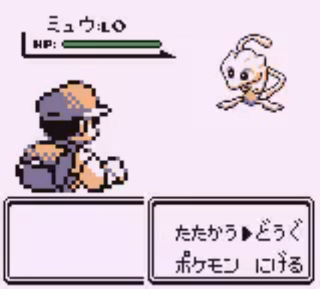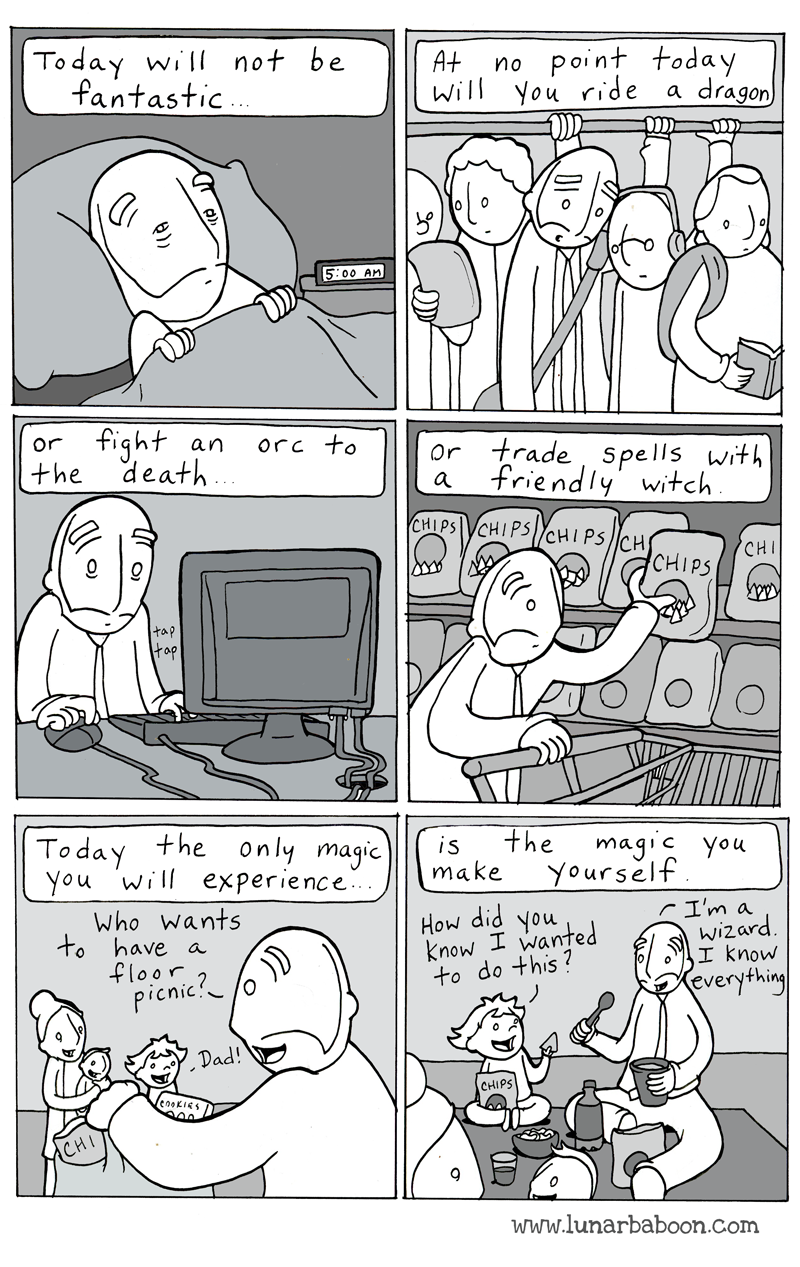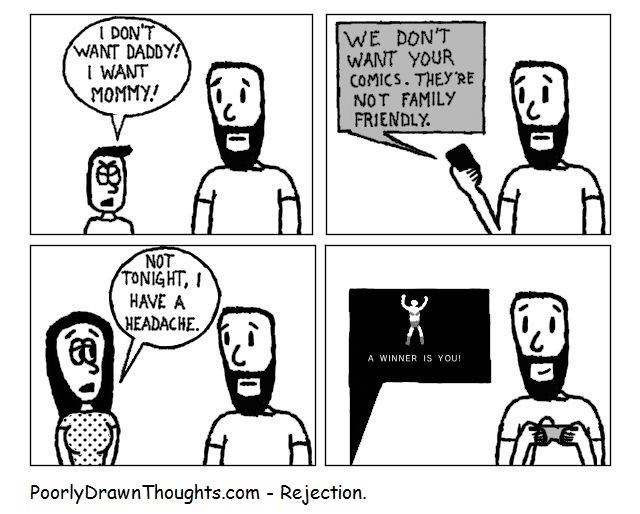
It’s hard to believe that Pokémon has been with us for the last 20 years now. On February 27th, 1996, a pair of Game Boy games called Pocket Monsters Red and Pocket Monsters Green made their debut in Japan. Not much was expected out of them, but a combination of word-of-mouth appreciation and wily marketing decisions helped push the games into a multi-media franchise. Pokémon is not just a game; it’s also an anime, a trading card game, toys, apparel, and more that is celebrated and popular around the world.
Lest you think this happened overnight, far from it. Nor was it pre-conceived to be a cash grab franchise. Pokémon was the product of six years of grueling development driven by one man’s vision and imagination. The creator, Satoshi Tajiri, was inspired by his own childhood in creating what became Pokémon. His experiences growing up in an increasingly urbanized Japan, love of arcade games, and collecting insects in the wilds drove the design for his Pocket Monsters.

With the help of legendary game designers and producers, Pokémon grew out of this vision into a finished product, one that transcended the Game Boy and crossed cultures outside of Japan. Telling the story of Pokémon’s creation is best served by the very people who made it. What follows is a collection of important figures from Pokémon history and their words on how they built up a video game empire.
The Players
- Satoshi Tajiri, creator & director of Pokémon Red & Green, founder, Game Freak
- Tsunekazu Ishihara, President & CEO, The Pokémon Company
- Satoru Iwata, former CEO, Nintendo Co. Ltd.
- Shigeki Morimoto, Director, Game Freak
- Koji Nishino, Game Designer, Game Freak
- Takeshi Kawachimaru, Game Designer, Game Freak
- Shigeru Miyamoto, Producer, Nintendo Co. Ltd.
- Masakazu Kubo, Executive Producer, Shogakukan Inc.
- Gail Tilden, former Pokémon Brand Manager, Nintendo of America
Prelude

Satoshi Tajiri: “The place where I grew up [in Machida, a western Tokyo suburb] was still rural back then. There were rice paddies, rivers, forests. It was full of nature. Then development started taking place, and as it grew, all the insects were driven away. I was really interested in collecting insects. [Later, Tajiri’s father tells me the other kids used to call Satoshi “Dr. Bug” as a child.] Every year they would cut down trees and the population of insects would decrease. The change was so dramatic. A fishing pond would become an arcade center.
On the subject of bugs: “[They] fascinated me. For one thing, they kind of moved funny. They were odd. Every time I found a new insect, it was mysterious to me. And the more I searched for insects, the more I found. If I put my hand in the river, I would get a crayfish. If there was a stick over a hole, it would create an air bubble and I’d find insects there. I usually took them home. As I gathered more and more, I’d learn about them, like how some would feed on one another. So I stopped bringing them home. But I liked coming up with new ideas. Like how to catch beetles. In Japan, a lot of kids like to go out and catch beetles by putting honey on a piece of tree bark. My idea was to put a stone under a tree, because they slept during the day and like sleeping under stones. So in the morning I’d go pick up the stone and find them. Tiny discoveries like that made me excited.”
“When I was 16, I won a contest Sega was sponsoring for a game idea. It took me two years to learn the programming, and a year to make my first game [called Quinty].”

Game Freak
Tajiri: “I was really into Space Invaders in about 1978. It got me more and more interested in video games. There wasn’t any media to get information about games, so I came up with Game Freak magazine. It was handwritten. I stapled the pages together. It had techniques on how to win games, secret tips for games like Donkey Kong.
Quinty was the first game developed by Game Freak, designed by Satoshi Tajiri himself
“The biggest sales were for a special issue on the Zabius game. We sold 10,000 copies. It cost 300 yen each. So when I was 18 I already had a business going. At first I used a photocopy machine–more important than style was selling information. But when sales increased, it was difficult to do it by hand. So I took it to a printer.”
In addition to founding Game Freak in the 1980s, Staoshi Tajiri also worked as a freelance games reviewer for Famicom Hisshou Hon. One of the games he covered was Mother (aka Earthbound Beginnings). In the review from the October 20th, 1989 issue, he said, “We’re still in a happenstance of witnessing the genesis of chaotic video game culture. Isn’t it exciting to think about the future of video games and all the limitless opportunities they hold with each new development?
Junichi Masuda: “…when I joined Game Freak, I joined as a music composer. However, I was also programming some games. Not the Pokémon games, but other games as well.”

Pocket Monsters
Tajiri: “I’m part of the first generation who grew up with manga [comics] and anime [animation], you know, after ‘Godzilla.’ I was absorbed with Ultraman on TV and in manga. The profession of game designer was created really recently. If it didn’t exist, I’d probably be making anime.”
Places to catch insects are rare because of urbanization. Kids play inside their homes now, and a lot had forgotten about catching insects. So had I. When I was making games, something clicked and I decided to make a game with that concept. Everything I did as a kid is kind of rolled into one–that’s what Pokémon is. Playing video games, watching TV, Ultraman with his capsule monsters–they all became ingredients for the game.”
Masuda: “As you know, the founder of Game Freak is Mr. [Satoshi] Tajiri, so when Mr. Tajiri talked to me about the idea he had… At that time, you could connect Game Boys with a cable, and you could play — and battle by playing in, for example, Tetris. But for this one, he had an idea of trading monsters. When I heard about that idea, I thought it was an interesting, fantastic idea. However, you then have to realize it, and make it into a game. The concept itself was very interesting, so you could expand and see how you could develop it into one game.”
Shigeru Miyamoto: “At first Pokémon was just an idea, and nothing happened.”

Game Freak on a field trip around 1994, while Pokémon was still in production
The Production
Tsunekazu Ishihara: “…the development itself took three years. But the conception of the idea took probably around six years, so we started with the original idea in 1990, so around six years in total.”
Masuda: “Development on the original games, Red and Green, took about six years, so I’ve been working on Pokémon for about 26 years now. In the beginning, I worked as a programmer, and I composed the music and worked on sound effects.”
On how the development computers kept breaking: “Some of my strongest memories from those days, and this happened a lot back then, but – I remember my computers always overheating and breaking down on me. I would work hard to fix them, and eventually we managed to complete the first Pokémon games, but I think I went through three or four computers by the end. I sure am glad I fixed those computers back then. If I hadn’t, the original Red and Green games might never have come out! That’s a scary thought!
So much went on with the creation of the original games. Of course, developing them was a lot of fun, too. I would sit in front of my computer from morning to night programming the games and coming up with all sorts of ideas.”
Tajiri on the Link Cable: “The communication aspect of Game Boy…was a profound image to me. It has a communication cable. In Tetris, its first game, the cable transmitted information about moving blocks. That cable really got me interested. I thought of actual living organisms moving back and forth across the cable.”
Masuda on random encounters: “[Random encounters] go back to the idea that different kinds of play exist. I think there’s these core categories of play: you have competition, imitation, and the element of surprise or excitement. I think Pokémon lets you choose between competition and the element of chance, and with the random encounters it’s a kind of lottery as you enter the tall grass and you don’t know what’s going to appear.”
Sugimori: “At one time, the protagonist would fight as well. But then we asked ourselves “If you can fight on your own, what’s the point of having Pokémon?”
Tajiri on why Pokémon faint: “I was really careful in making monsters faint rather than die. I think that young people playing games have an abnormal concept about dying. They start to lose and say, “I’m dying.” It’s not right for kids to think about a concept of death that way. They need to treat death with more respect.”
Masuda: “At first, the protagonist and his Pokémon had a human-pet relationship. When we started making the game, however, we wondered whether it wouldn’t be better if they were more like friends. That’s when the story changed to one where everyone grew up together. Since they were meant to be friends, we made it so that each player could raise a Pokémon and develop its personality. That’s why they can only learn 4 moves. When deciding on what sort of moves he wants his Pokémon to have, the owner’s personality will come out. We designed it so that you’d feel your Pokémon were something that belonged to you, friends to you.”
Ken Sugimori on the addition of Elemental Types: “The idea came to us during development. Battles would get monotonous if there were only strong and weak Pokémon, so by affixing types to the Pokémon we were able to give the fighting more depth. There were also characters that were born of their types.”
During the six years it took Tajiri to finish Pokémon, Game Freak nearly went broke. For several months, he barely had enough money to pay his employees. Five people quit when he told them how dire the financial conditions were. Tajiri didn’t pay himself, but lived off his father.

Of Pokémon and Men
Masuda on how Pokémon are designed: “There are several different processes, but the most common is that a graphic designer will come up with an idea, and talk to the game designers. The game designers will then decide what type of Pokémon that creation is, and what kind of abilities it has. And then they decide what places and environments you’d find this Pokémon. It’s important to have this communication between graphic and game designer. The designers will many times go back to the artist and say, “This Pokémon is this type, so can you make it look more like this or that.”
Sugimori: “At first, Pokémon were more dinosaur-like than the ones you see today. Beginning the story by choosing 1 of 3 Pokémon of different types was also something that came about in the middle of development. It’s pretty common at our company to have a game change completely during the development period. We had at least 10 different scenarios just for the opening sequence.”
Ishihara: “These ideas for each of these monsters came from the imagination of the software developers at Game Freak who get these ideas from their childhood experiences, including from reading Manga, the name for Japanese comic books. Ideas also come from scary experiences they had as kids, catching insects, and so forth. So from these experiences in childhood, these ideas for Pokémon came out.”
Nishino: “[Satoshi] Tajiri was in charge of the basics, but I was the one that fine-tuned the balance. I’d begin by looking at a picture of a Pokémon and asking myself “How strong would this Pokémon be?”, deciding its level from there. Then I’d play-test it, and readjust its level if it wasn’t fun enough. Wash, rinse, and repeat. There were also times when I’d have to decide on a character and level based on what was necessary for the story at the time.”

Sugimori on the first Pokémon created: “The first Pokémon were Rhydon, Clefairy, and Lapras. At first, we’d planned to have Pokémon living alongside humans, making their lives easier. So, during the early stages of development, many of the characters we came up with had clear roles, like carrying things around or sailing across the sea with people on their backs. We also thought up cute pet-like characters like Clefairy.”
Tajiri on Pikachu: ” …in Japan, everybody goes for Pikachu. In the U.S., the characters Ash [Satoshi in Japan] and Pikachu are grouped together. American kids seem to like that. In America there are more products sold with Ash and Pikachu together, not just Pikachu alone. I think Americans actually understand the concept of Pokémon better than the Japanese. The Japanese focus on Pikachu, but what I think is important is the human aspect–you need Ash.”
Takeshi Kawachimaru picks his favorite Pokémon: “I like Bulbasaur. Before I started to work for Game Freak, I purchased Pokémon Green Version and I chose it as my starter. It was love at first sight. It’s four-legged and stubby. It’s the same for dogs. I like Corgis because of the stubby legs.”

Ishihara on his favorite Pokémon: “Exeggutor is my favorite. That’s because I was always using this character while I was debugging the program.”
Tajiri on the names of Pokémon: “They all have meaning. Like Nyasu (ed. Meowth in the English release). It’s from a Japanese proverb about a cat with money on his head that doesn’t know it’s there. It’s about understanding the value of money. I don’t think they have that concept in the U.S., so the name is different. And Pikachu. ‘Pika’ is the sound Japanese say an electric spark makes. And ‘chu’ is the sound a mouse makes. So Pikachu is like an electric mouse.”
Nishio on Pokémon rarity: “If we hadn’t made a certain number of rare Pokémon, no one would want to collect them. To that end, we made sure there were a few Pokémon that would be difficult to catch. The Pokémon that resemble familiar creatures you’d find around you in the real world appear quite frequently. That means Pokémon like Pikachu are harder to find.”
Sugimori: “People who own rare Pokémon will spark the envy of their friends. Even in the game world rare Pokémon are very popular. There’s a character who compliments you, saying “What a cute Pikachu you have!”, which is pretty much the same thing that happens in the real world.”

On Mew
Ishihara: “There was also the small matter of Mew, the Pokémon that Morimoto-san contrived as a kind of prank…”
Morimoto: “We put Mew in right at the very end. The cartridge was really full and there wasn’t room for much more on there. Then the debug features which weren’t going to be included in the final version of the game were removed, creating a miniscule 300 bytes of free space. So we thought that we could slot Mew in there. What we did would be unthinkable nowadays!”
“Unless we could think about any good opportunity to do so, the existence of Mew wouldn’t have been revealed to the public. It was left in there so it would be ready in case it suited to some post-launch activity to make use of it. But if there wasn’t anyone among ourselves who wanted to use it, I thought it would be fine to just leave it as it was.

But then due to an unforeseen bug, Mew ended up appearing in some players’ games. It looked like we planned all of this, but that wasn’t the case. So although it caused all sorts of problems to many concerned, fortunately enough it ended up having a positive effect.”
Tajiri: “Mew was not originally included in the games for people to acquire. You had to get it from interacting with Game Freak or Nintendo. There were 150 characters, and Mew was number 151. You can’t ever get a Mew without trading for it. It created a myth about the game, that there was an invisible character out there. Someone gives me Mew, then I give Mew to you, then you pass it on. Introducing a new character like that created a lot of rumors and myths about the game. It kept the interest alive.”

The Release, February 27th 1996
Ishihara: “We originally completed the titles in October of the year prior to their release and wanted to release them quickly. But we missed the end of year sales season and finally released the games at the end of February of the following year – the very worst time of year to release games! (laughs)”

Tajiri: “[Nintendo] didn’t expect much from the game. Game Boy’s popularity was declining. Just when I finished the game and took it to Nintendo, I felt like a baseball player who slides into second base even though you know you’re going to be out–but then it turns out you are safe.”
Kubo: “No magazine or TV show was interested. They thought Game Boy was finished. No toymakers were interested either.”
Iwata: “There was a really incredible response to CoroCoro Comic’s announcement of the Mew offer. I feel that’s really when things turned round for Pokémon.”
The first commercial for Pocket Monsters Red and Green
Ishihara: “The monthly sales we’d had up to then began to be equaled by weekly sales, before increasing to become three then four times larger.”
In addition, there were all these rumors that were spreading but only through word-of-mouth. But then once media outlets like CoroCoro Comics started writing about them then everybody started to talk about how there seems to be a mythical Pokémon named Mew. That moment, when these urban legends started to spread more and more, is when we realized that it had become a hit.”
Sugimori: “Of course, I knew that in order for the whole “trading Pokémon” idea to work, we’d need to sell a certain number of copies. But early on we were aiming for 1,000,000. We didn’t predict we’d be anywhere near this successful. We also didn’t imagine there would be any merchandise based on the characters, so we were really happy with all the stuff that came out.”

The Legacy
Tajiri: “When you’re a kid and get your first bike, you want to go somewhere you’ve never been before. That’s like Pokémon. Everybody shares the same experience, but everybody wants to take it someplace else. And you can do that.”

Ishihara: “When I look back to when we were first developing the original Pokémon Red and Green, looking at the details, the design, there were many things that suggested to me then that this game would be successful. However, I never imagined at that point that this game would be successful outside of Japan.”
Masuda: “When we created this game [Pokémon], the target audience was very broad. We created a game that a 60 year old can play it with their grandchildren.”
Gail Tilden on why Pokémon has endured: “I think it’s the amount of depth and overall quality. It took six years for the creators to complete the game and all the original ideas and concepts and things about the [RPG], the evolve system, the battling, the trading. It has so much depth and it’s so carefully and creatively thought out, and I think that’s appreciated.”
Miyamoto on Pokémon’s merchandising success: “Mr. Tajiri didn’t start this project intending to make something that would become very popular. He just wanted to make something he wanted to play himself. There was no business sense involved, only his love involved in the creation. Somehow, what he wanted to create for himself was appreciated by others in this country and is shared by people in other countries.”
“You don’t know with these things. I don’t want to make a cop-out and say it’s just a fad, but that’s what it is. This too will have it’s peak. It won’t be around for the next 20 years, I don’t think.” Ed Roth, president of NPD Group’s Leisure Activities Tracking Services
Bibliography
The Ultimate Game Freak, TIME, Nov. 22 1999
Mother 1 Review by Pokémon Creator Satoshi Tajiri, Yomuka!, December 18, 2011
The Art of Balance: Pokémon’s Masuda on Complexity and Simplicity, Gamasutra, April 3 2009
Pokémon20 Message, GAME FREAK’s Junichi Masuda, February 2 2016
Pokémon development interviews, Nintendo Online Magazine via Glitterberri
Tsunekaza Ishihara: The Pokémon Interview, Spong, June 14 2007
Beware of the Pokémania, TIME, November 14 1999
So Does Pokémon Omega Ruby and Alpha Sapphire Include Trainer Customization?, US Gamer, October 18 2014
Creating the Pokémon Interview, prior to GSC, via Tumblr
Iwata Asks: Pokémon Heart Gold & Soul Silver, Nintendo
Talking Pokémon, Nintendo Power Vol. 240, April 2009
ABC News Pokémon Chat Transcript, IGN, February 9, 2000
Switch Vol.34 No.01, January 2016
E3 2004: The Pokémon Creators Speak, IGN, May 13 2004
What’s the Deal with Pokémon?, Electronic Gaming Monthly #124, November 1999
Pokemon































 Thankfully this guy chose to play Pro Wrestling and not Dark Souls.
Thankfully this guy chose to play Pro Wrestling and not Dark Souls.


 On February 27, 1996, Pocket Monsters: Red & Green (known in the West as Pokémon Red Version and Pokémon Blue Version) were originally released in Japan. Twenty years later, Pokémon is the largest role-playing, video game franchise ever and showing no sign of stopping.
On February 27, 1996, Pocket Monsters: Red & Green (known in the West as Pokémon Red Version and Pokémon Blue Version) were originally released in Japan. Twenty years later, Pokémon is the largest role-playing, video game franchise ever and showing no sign of stopping.











